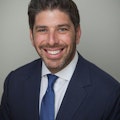When business meets bedside: How practice management drives patient-centered care
Key Takeaways
• Build culture that supports patient care: Invest in a respectful, values-driven team environment—staff who feel supported pass that care and confidence on to patients.
• Systematize training for consistency and performance: Implement structured onboarding and continuous education to reduce variability and empower team members across all roles.
• Use clinician-led strategy to align values with growth: When providers drive decision-making, practices prioritize trust and outcomes—not just profitability.
When I started my oral surgery practice, I knew clinical skill alone wouldn’t guarantee great outcomes. A flawless procedure doesn’t mean much to a patient frustrated by a chaotic front desk or unclear post-op instructions. Patient experience isn’t just shaped in the chair, it’s shaped by every decision made behind the scenes. What happens in the back office is just as important as what happens in the operatory.
Running a dental practice is more than doing procedures—it’s about leading a team and building systems that prioritize people. After years of building Riverside Oral Surgery and now cofounding MAX, I’ve seen firsthand how intentional practice management improves patient-centered care. Here’s how it works across five key areas: culture, training, leadership, systems, and clinician-led strategy.
Culture: What patients feel before you say a word
Culture isn’t written on the walls, it’s lived in the halls. Walk into any practice and you can feel it. Is the team collaborative or combative? Welcoming or worn down? Patients notice immediately.
From day one, I’ve insisted on high standards—clean spaces, well-laid-out instruments—but culture goes beyond cleanliness. It’s about values. We’ve built a culture of respect, inclusivity, and doing the right thing, even when no one’s looking.
Why does this matter for patients? Because teams who feel respected treat patients better. A well-supported assistant or front desk coordinator passes that confidence and care forward. It’s a feedback loop that creates trust, and trust leads to better outcomes. The way your team treats each other shapes how they treat patients. Culture walks into the room before you do.
Training: Consistency creates confidence
In today’s fast-evolving clinical landscape, ongoing training isn’t a luxury, it’s essential. Patients judge their experience across every touchpoint. Every member of your team matters.
We’ve built structured onboarding and ongoing education into our practices. New hires aren’t thrown into the deep end. They’re mentored, trained, and given clear expectations. We identify and nurture the internal leaders that others naturally turn to for help.
This isn’t about micromanaging. It’s about building consistency. Whether it’s Monday morning or Friday afternoon, patients should feel confident and cared for. When the whole team is trained to handle questions, manage stress, and deliver excellence, patients can feel the difference. And that builds loyalty.
Leadership: Vision, not just direction
Leadership isn’t about having the loudest voice or the biggest title. It’s about responsibility. And it starts with clarity of vision.
From the beginning, my vision was to deliver uncompromised care in an unparalleled setting. That philosophy guided every decision, from how we hire to how we invest in patient comfort. Leadership means asking, “How does this affect the patient experience?” If the answer isn’t clear, or isn’t positive, we rethink it.
It also means showing up. If I expect my team to prioritize patient comfort, I have to do the same. That might mean calling a patient at night or stepping in when things get hectic. People don’t follow words, they follow actions.
Great leaders also listen. Some of our best improvements have come from front-line staff. If your team trusts you, they’ll share ideas. And if they feel heard, they’ll give patients their best.
Systems: Removing the pebbles in the shoe
Good systems are invisible. Bad ones are friction you can feel. Patients don’t notice when things run smoothly, but they absolutely notice when they don’t.
We’ve invested in systems that reduce stress, not create it—from streamlined scheduling and automated reminders to team huddles and digital communication tools. These systems don’t just make our lives easier, they prevent patients from falling through the cracks.
Importantly, we use technology to support the human connection, not replace it. The best systems disappear into the background, letting the patient feel seen and cared for. When the operations are dialed in, your team isn’t scrambling, they’re focused. And that focus makes all the difference.
Clinician-led strategy: Who’s driving matters
Growth and investment aren’t bad words in dentistry. But the question is always: who’s steering?
At MAX, we built a surgeon-led platform for a reason. Clinician-led organizations make decisions through a different lens—one grounded in outcomes and ethics. It’s not that we ignore profitability, it’s that we don’t chase it at the expense of patient trust.
That’s why we hire proactively, invest in equipment, and choose quality over shortcuts. If a treatment is clinically right but financially suboptimal, we do it anyway. Because in the long run, trust builds sustainability.
In clinician-led organizations, leadership and providers often share the same roles. That alignment creates decisions rooted in care, not just cash. When growth is guided by values, patients benefit, even if they don’t realize it.
Business decisions are care decisions
Step back and it’s clear: you can’t separate the “business” side of a practice from the care it delivers. A dysfunctional practice can’t deliver exceptional care no matter how good the dentist is. But a well-run, people-first organization elevates every experience, from check-in to post-op.
I’ve seen it time and again. A grateful patient’s note. A loyal staff member growing into a leader. A referring doctor trusting us with their own family. These moments don’t happen by accident. They’re the result of deliberate choices—supporting your team, refining your systems, and leading with your values.
Great patient care doesn’t happen in spite of good business. It happens because of it. Every time you fix a broken process or uplift a team member, you’re making a healthcare decision. That’s the lens we use at MAX, and it’s one I encourage more clinicians to adopt.
Because in the end, the most successful practices aren’t just financially sound, they’re human-centered. And that’s what drives dentistry forward, one patient at a time.
Editor's note: This article originally appeared in DE Weekend, the newsletter that will elevate your Sunday mornings with practical and innovative practice management and clinical content from experts across the field. Subscribe here.
About the Author

Jason M. Auerbach, DDS
Jason M. Auerbach, DDS, is a renowned oral and maxillofacial surgeon. He is known as an industry leader through his handle @bloodytoothguy (190K followers), where he educates rising dental stars. Dr. Auerbach founded Riverside Oral Surgery in 2007, which prides itself on providing the optimal patient experience. With 10 locations, this is the premier full-scope group in New Jersey and the Official Oral Surgeons of the New Jersey Devils. His newest venture, MAX Surgical Specialty Management, supports 28 locations in five states across the Northeast.
